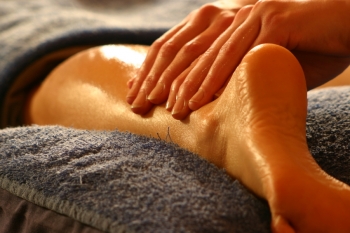Heading to the snow this winter?
How to prevent snow sport injuries
The Statistics:
Snow sport injuries are relatively severe and therefore the costs are high. In 2011 snow injuries cost ACC over $18.5million. There were over 12,500 new claims for snow sports injuries during 2011.An entitlement claim means that a person sustained a moderate to severe injury sufficient for them to require a week or more off work.
The Injuries:
The most common injuries amongst snowboarders involve the upper limbs. The force of the falling body, com bined with any momentum generated
during boarding, will transfer to the arm stressing structures within
the arm, typically at the wrist or shoulder.
bined with any momentum generated
during boarding, will transfer to the arm stressing structures within
the arm, typically at the wrist or shoulder.Knee injuries are the most common skiing injuries and this often involves a sprain of the medial collateral ligament on the inside of the knee. Usually this results from a twisting fall when the lower leg bends outwards relative to the thigh.
In 2011, the top five skiing injury sites were:
• Knees (28%)
• Shoulder (13%)
• Back/spine (10%)
• Neck (6%)
• Lower leg (6%)
For snowboarding the top five injury sites were:
• Shoulder (16%)
• Back/spine (14%)
• Hand/wrist (13%)
• Knee (12%)
• Upper and lower arm (8%)
The clear winner (or loser!) for the most common injury area is the knee – that may be a relatively minor injury and you can recover without losing function, or could be very serious indeed.
The vast majority of knee injuries are ligament sprains, commonly on the inside of the knee. Usually that results from a twisting fall or a ‘snowplough gone wrong’ when the lower leg bends outwards relative to the thigh. Figures from Snow Smart.
The Injury Prevention Tips:
ACC with the NZ Snowsports Council recommend the following tips:• Knowing your Snow Responsibility Code
• Skiing or snowboarding to your ability
• Wearing protective gear such as wrist guards and helmets
• Warming up and cooling down to prevent delayed onset muscle soreness (DOMS) See below
• Pre-season conditioning and sport specific technique (eg: lessons)
• Being aware of fatigue and keeping well “fuelled” (eg: correct nutrition)
• Wearing correct clothing and maintaining equipment
• Have a regular massage pre and post ski holiday!!
For more information go to
www.snowsmart.co.nz
A good warm up is essential:
Ideally you should have been doing some conditioning training leading up to your skiing/snowboarding holiday such as Squats, Static and Dynamic Lunges, Side to Side movements if you’re a skier, Core Stability, Calf Raises and lots of stretching too.
A warm up on the day does not consist of a pie on the chairlift!!A good brisk walk from the car park is a good start to get the blood flowing, then you can do some arm swings and push ups against a wall 10 – 15 reps, some torso twists by using your ski pole horizontal along your shoulders and twisting.
Then lower limb warm up: squats 10 – 15 reps, leg swings (use a ski pole for stability) 10 – 15 reps, static lunges 10 quick reps to get the muscles firing each side.
Stretches
Hamstring stretch, quad stretch, hip flexor stretch (in a lunge position) and calf stretch.Post skiing do the above stretches and add in the glute and piriformis stretch (lying on your back with one ankle on the other knee and draw the knee towards your chest)
Then you can Apre’s ski with a mulled wine!
Don’t forget to pack your Hot Stuff (perfect for warming up the muscles before you go up the mountain) and your Fix Creme or Antiflamme Creme (perfect for those sore muscles after the mountain) available for purchase at the clinic.
And book your massage!!









